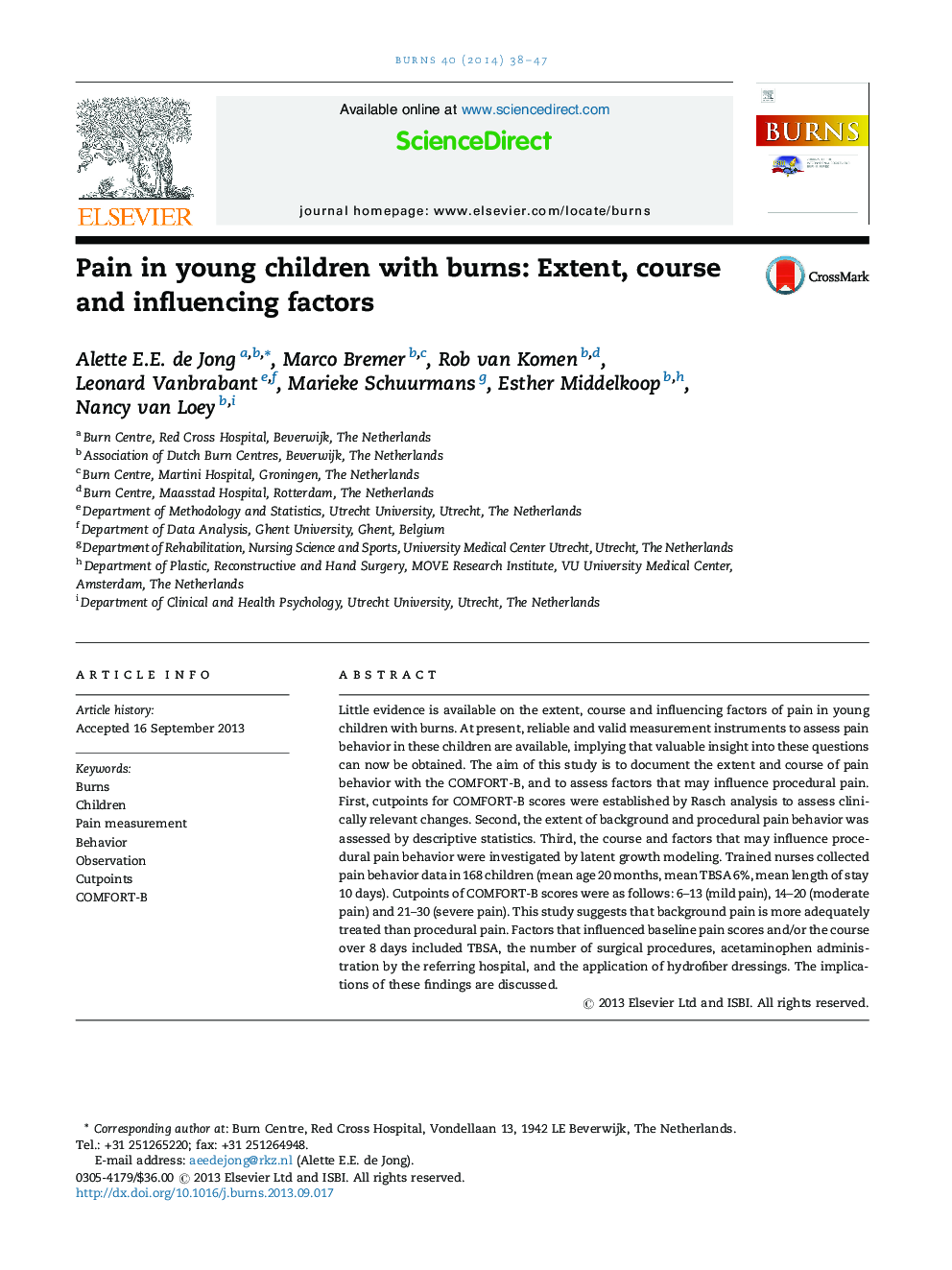| Article ID | Journal | Published Year | Pages | File Type |
|---|---|---|---|---|
| 3104618 | Burns | 2014 | 10 Pages |
Little evidence is available on the extent, course and influencing factors of pain in young children with burns. At present, reliable and valid measurement instruments to assess pain behavior in these children are available, implying that valuable insight into these questions can now be obtained. The aim of this study is to document the extent and course of pain behavior with the COMFORT-B, and to assess factors that may influence procedural pain. First, cutpoints for COMFORT-B scores were established by Rasch analysis to assess clinically relevant changes. Second, the extent of background and procedural pain behavior was assessed by descriptive statistics. Third, the course and factors that may influence procedural pain behavior were investigated by latent growth modeling. Trained nurses collected pain behavior data in 168 children (mean age 20 months, mean TBSA 6%, mean length of stay 10 days). Cutpoints of COMFORT-B scores were as follows: 6–13 (mild pain), 14–20 (moderate pain) and 21–30 (severe pain). This study suggests that background pain is more adequately treated than procedural pain. Factors that influenced baseline pain scores and/or the course over 8 days included TBSA, the number of surgical procedures, acetaminophen administration by the referring hospital, and the application of hydrofiber dressings. The implications of these findings are discussed.
